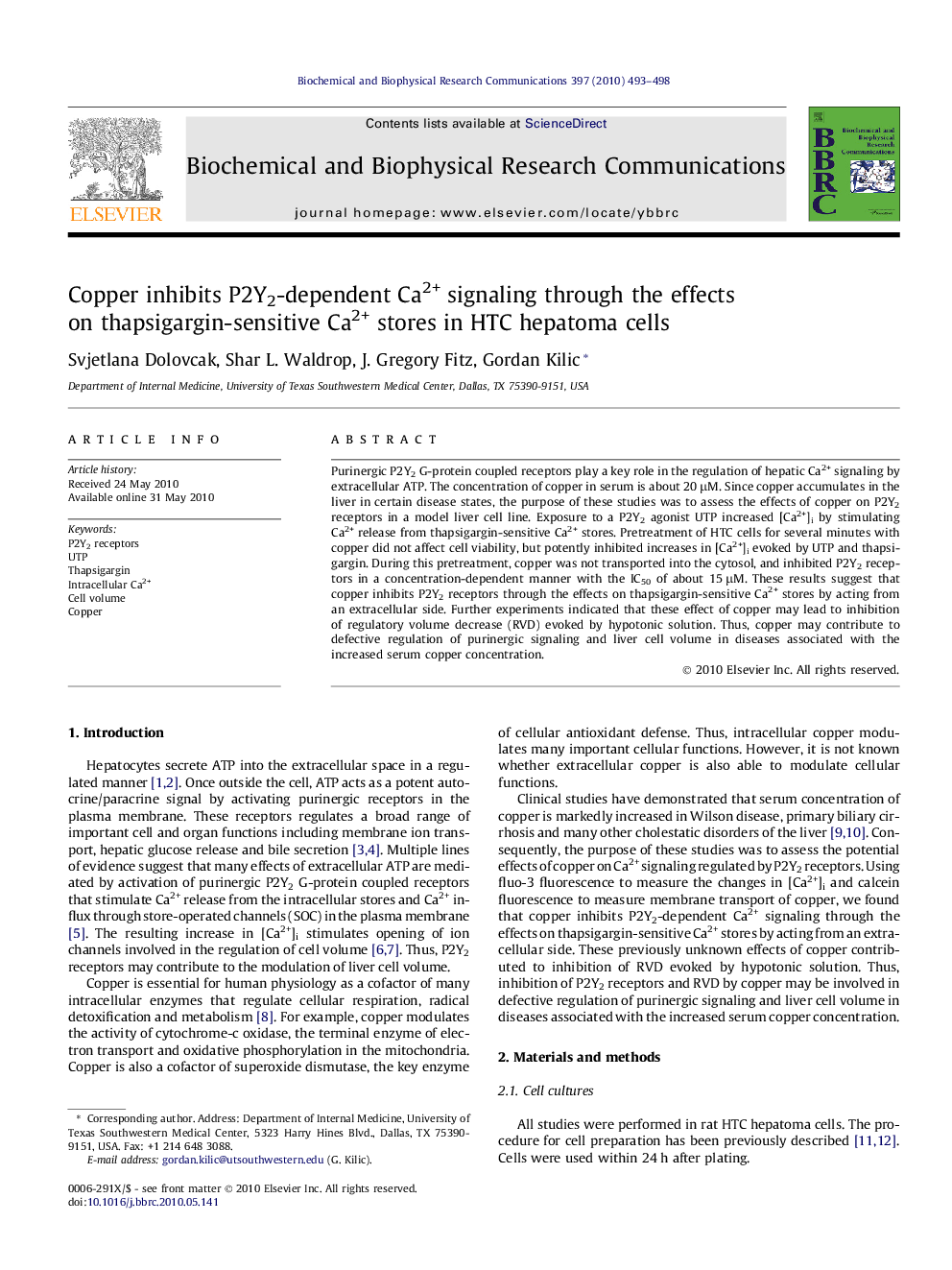| Article ID | Journal | Published Year | Pages | File Type |
|---|---|---|---|---|
| 1931898 | Biochemical and Biophysical Research Communications | 2010 | 6 Pages |
Purinergic P2Y2 G-protein coupled receptors play a key role in the regulation of hepatic Ca2+ signaling by extracellular ATP. The concentration of copper in serum is about 20 μM. Since copper accumulates in the liver in certain disease states, the purpose of these studies was to assess the effects of copper on P2Y2 receptors in a model liver cell line. Exposure to a P2Y2 agonist UTP increased [Ca2+]i by stimulating Ca2+ release from thapsigargin-sensitive Ca2+ stores. Pretreatment of HTC cells for several minutes with copper did not affect cell viability, but potently inhibited increases in [Ca2+]i evoked by UTP and thapsigargin. During this pretreatment, copper was not transported into the cytosol, and inhibited P2Y2 receptors in a concentration-dependent manner with the IC50 of about 15 μM. These results suggest that copper inhibits P2Y2 receptors through the effects on thapsigargin-sensitive Ca2+ stores by acting from an extracellular side. Further experiments indicated that these effect of copper may lead to inhibition of regulatory volume decrease (RVD) evoked by hypotonic solution. Thus, copper may contribute to defective regulation of purinergic signaling and liver cell volume in diseases associated with the increased serum copper concentration.
